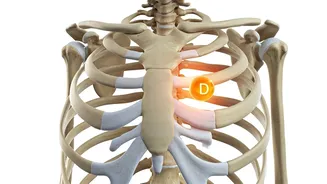Sunshine Paradox Explained
India's geographic location and climate, which receives ample sunlight throughout the year, seems to make the widespread presence of Vitamin D deficiency
quite unexpected. However, several factors combine to explain this health puzzle. One important factor is the prevalence of dark skin pigmentation. Melanin, the pigment responsible for darker skin, acts as a natural sunscreen, reducing the skin's ability to synthesize Vitamin D from sunlight. While this protects against sun damage, it also hampers Vitamin D production. Furthermore, cultural practices, such as wearing full-body clothing, often limit sun exposure. The average Indian diet, which may not include many Vitamin D-rich foods such as fatty fish and fortified products, is another contributing factor.
Dietary Shortcomings Uncovered
Dietary habits play a crucial role in Vitamin D intake. Many common Indian foods have low Vitamin D content. Traditional diets typically lack foods rich in Vitamin D, such as fatty fish like salmon, tuna, and mackerel. While certain foods, like milk and dairy products, are now fortified with Vitamin D in some areas, this practice isn't uniformly applied across India. Consequently, many individuals don't get enough Vitamin D through their diet. The availability of fortified foods and the dietary choices of individuals significantly affect Vitamin D levels. Incorporating more Vitamin D-rich foods or considering supplements might be necessary to counter the deficiency.
Cultural and Lifestyle Influences
Cultural norms and lifestyle choices also play a significant role in the prevalence of Vitamin D deficiency. Traditional clothing, which covers large parts of the body, reduces skin exposure to sunlight, a key factor in Vitamin D synthesis. Indoor lifestyles and increasing urbanization also contribute to reduced sun exposure. Many people spend most of their time indoors, whether at work or home, limiting the time their skin is exposed to UVB rays, which are essential for Vitamin D production. These lifestyle choices further exacerbate the problem, making it challenging to maintain sufficient Vitamin D levels through natural means.
Health Consequences Explored
Vitamin D deficiency can lead to various health issues. It's essential for bone health, and a deficiency can result in weakened bones, increasing the risk of fractures and conditions like rickets in children and osteomalacia in adults. Beyond bone health, Vitamin D plays a crucial role in immune function. Low levels of Vitamin D can weaken the immune system, making individuals more susceptible to infections and chronic diseases. Emerging research also links Vitamin D deficiency to increased risks of cardiovascular diseases, certain cancers, and mood disorders. Understanding these potential consequences highlights the importance of addressing and preventing Vitamin D deficiency to promote overall health and well-being.
Strategies for Improvement
There are several strategies to improve Vitamin D levels. One of the easiest methods is to increase sun exposure. Aim for 15-30 minutes of sun exposure on the arms and legs, especially during the middle of the day when UVB rays are strongest. Remember to do this cautiously to prevent sunburn, and the time required can vary depending on skin tone and the intensity of the sunlight. Dietary changes are also critical. Include Vitamin D-rich foods in your diet, or consider supplements after consulting with a healthcare professional. Vitamin D supplements are available in both D2 and D3 forms, with D3 being the most effective. Regular monitoring of Vitamin D levels through blood tests can help assess the effectiveness of interventions and adjust them accordingly.



